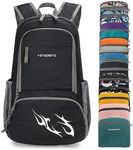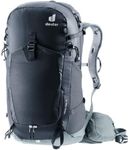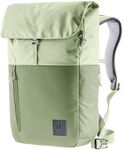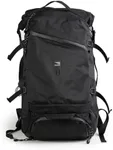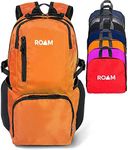Buying Guide for the Best Travel Daypacks
Choosing the right travel daypack can make a significant difference in your travel experience. A good daypack should be comfortable, durable, and suitable for your specific needs. When selecting a travel daypack, consider the activities you'll be doing, the climate you'll be in, and the amount of gear you'll need to carry. Here are some key specifications to help you make an informed decision.CapacityCapacity refers to the volume of the daypack, usually measured in liters. This spec is important because it determines how much you can carry. Daypacks typically range from 10 to 30 liters. For short hikes or city tours, a smaller pack (10-20 liters) is sufficient. For longer day trips or if you need to carry extra gear like a camera or a jacket, a larger pack (20-30 liters) is better. Choose a capacity based on the length of your trips and the amount of stuff you need to carry.
WeightThe weight of the daypack itself is crucial, especially if you plan to carry it for extended periods. A lighter pack is easier to carry but may sacrifice some durability or features. Daypacks can range from ultra-light (under 1 pound) to more robust options (2-3 pounds). If you prioritize comfort and plan to carry the pack for long hours, opt for a lighter model. However, if you need more features and durability, a slightly heavier pack might be worth it.
MaterialThe material of the daypack affects its durability, weight, and water resistance. Common materials include nylon, polyester, and canvas. Nylon and polyester are lightweight and often treated to be water-resistant, making them good for most travel conditions. Canvas is heavier but very durable. If you expect to encounter wet conditions, look for a pack with water-resistant or waterproof materials. Choose a material based on the climate and conditions you'll be traveling in.
ComfortComfort is determined by the design of the straps, back panel, and overall fit of the daypack. Look for padded shoulder straps and a padded back panel for better comfort. Some daypacks also have a hip belt or sternum strap to help distribute the weight more evenly. If you plan to carry the pack for long periods, these features can significantly enhance comfort. Try on different packs to see which one feels the best on your back and shoulders.
Compartments and OrganizationThe number and type of compartments in a daypack can help you stay organized. Some packs have multiple pockets, including specialized ones for laptops, water bottles, and small items. If you carry a lot of gadgets or need to keep things organized, look for a pack with several compartments. For simpler needs, a pack with fewer pockets might suffice. Consider what you typically carry and how you like to organize your belongings when choosing a pack.
Hydration CompatibilityHydration compatibility means the daypack can accommodate a hydration reservoir (water bladder). This feature is important for staying hydrated during hikes or long walks. Packs with this feature have a dedicated sleeve for the reservoir and a port for the drinking tube. If you plan to do a lot of outdoor activities, a hydration-compatible pack can be very convenient. If you prefer using water bottles, this feature may not be necessary.
Security FeaturesSecurity features like lockable zippers, hidden pockets, and cut-resistant materials can help protect your belongings from theft. These features are particularly important if you'll be traveling in crowded or high-risk areas. If security is a concern, look for packs with these added protections. For lower-risk environments, standard zippers and pockets may be sufficient.

